The crisis of values of the early Renaissance led, in the early sixteenth century, to the development of the period known as the Mature Renaissance: a period in which the founding values of the Renaissance (perspective rigor, the investigation of reality based on abstract canons, harmony and balance) were seriously challenged through continual reinterpretation and experimentation.
This work of renewal started, once again, from Florence and then radiated to the main centers of the peninsula, especially to Rome and Milan. Florence once again played the leading role because in the early sixteenth century, still in the Republican era, it saw the fortunate and simultaneous presence of the three great geniuses of the mature Renaissance: Leonardo da Vinci (Vinci, 1452 - Amboise, 1519), Michelangelo Buonarroti (Caprese, 1475 - Rome, 1564) and Raphael Sanzio (Urbino, 1483 - Rome, 1520).
Compared to Michelangelo and Raphael, Leonardo belonged to a slightly earlier generation, but already in the Florence of Lorenzo the Magnificent, when he was studying at Verrocchio’s workshop, he was moved by his proverbial inquiring spirit: it was precisely his different way of understanding the study of reality that was one of the greatest contributions Leonardo brought to the mature Renaissance. For if the painters of the early Renaissance approached the study of reality on the basis of abstract and mathematical laws, Leonardo subverted this approach by basing his study ondirect observation of nature. For Leonardo, art was also a tool for gaining in-depth knowledge of reality: in fact, his first known work is a Landscape (a drawing preserved at the Uffizi Drawings and Prints Cabinet in Florence) where Leonardo investigates in a very concrete way a view of the Arno Valley.
This investigative will also led Leonardo to a profound revision of linear perspective, which was considered insufficient to represent three-dimensionality in painting. The artist therefore elaborated aerial perspective based on the intuition that the air that comes between the observer’s eye and the object, altering its sharpness and chromatic perception, can give an idea of the distance of the latter from the observer. This is why Leonardo comes to elaborate a perspective based on this concept: in his paintings, subjects in the distance lose clarity in the definition of their forms and diminish their chromatic contrasts(Annunciation, c. 1472-1475, Florence, Uffizi). And again, this investigation of reality led Leonardo to develop the technique of sfumato: starting from the idea that bodies in space do not have sharp shapes (as might have appeared in the works of the Florentine Quattrocento, where figures were emphasized by their outlines), Leonardo elaborated a very fine chiaroscuro, made up of very subtle gradations of color, which went so far as to make the figure of the character blend with the space around it(La Belle Ferronière, c. 1490-1495, Paris, Louvre). It is not that Leonardo despised the achievements of the early Renaissance: however, he believed that in order for the painter to be truly universal, in addition to studying reality with a mathematical eye (science was in fact still a solid foundation on which art had to find its footing), he also had to observe and experiment with it in order to draw as much information and suggestions as possible from natural phenomena. Art with Leonardo thus became an instrument of knowledge.
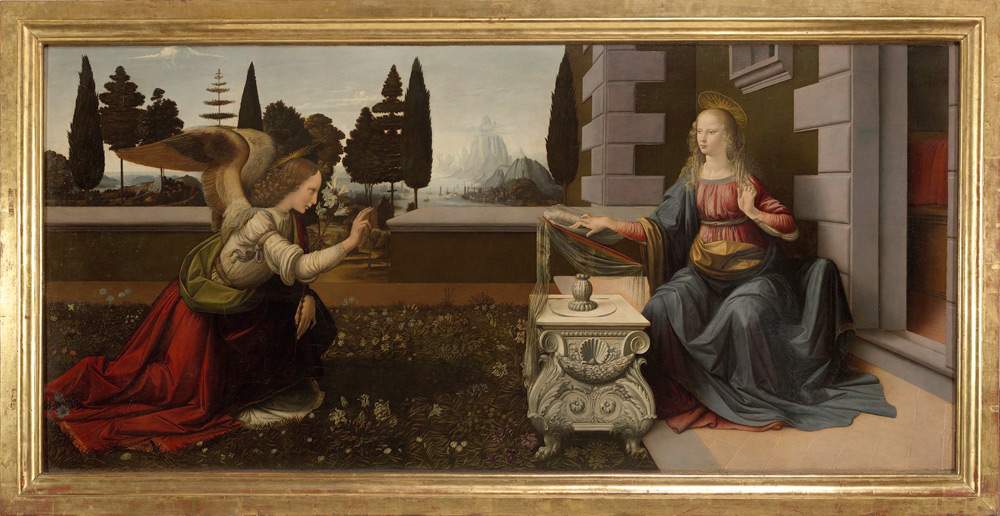
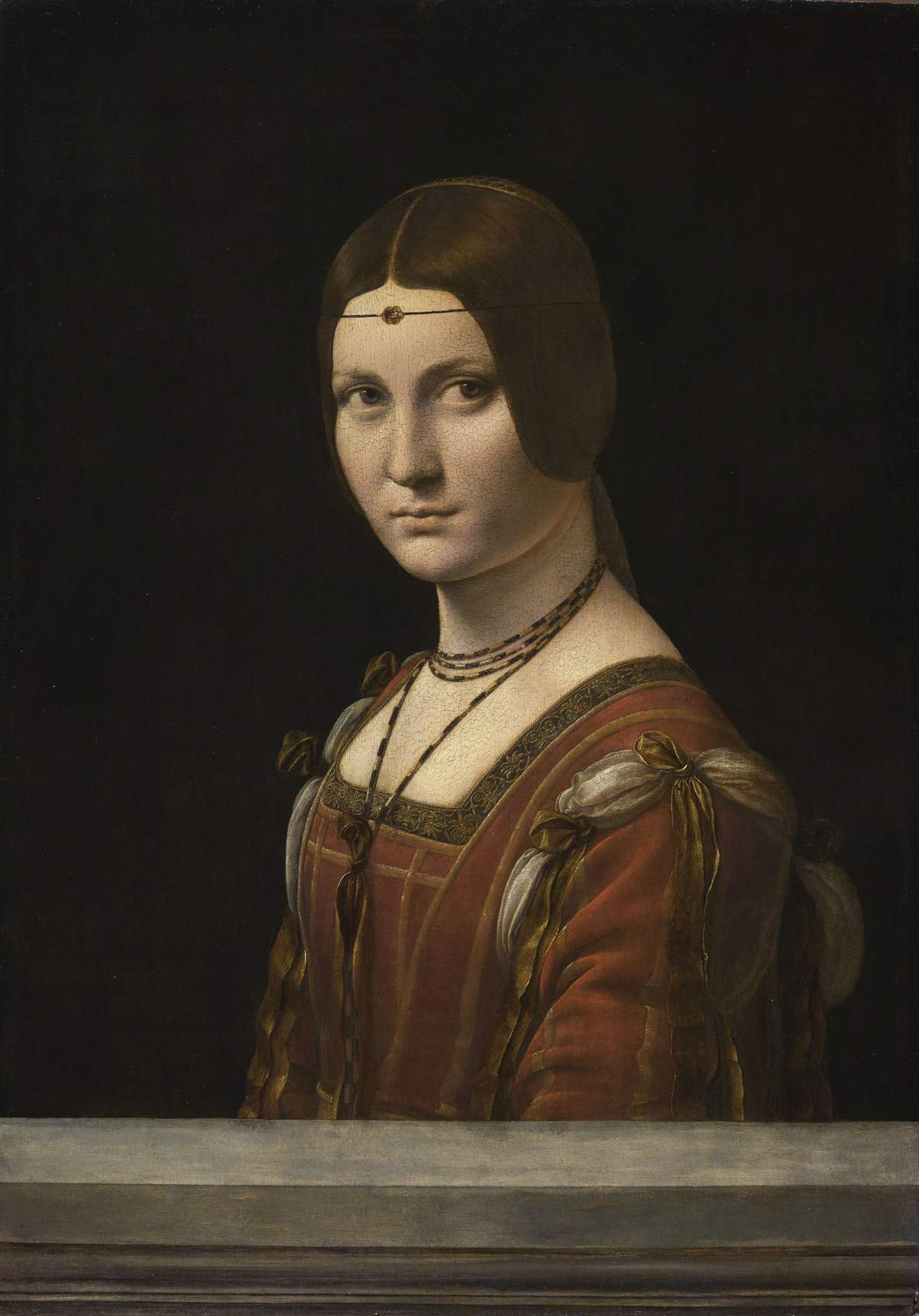
Michelangelo, too, took his first steps in Laurentian Florence, and in the early sixteenth century he came to a direct confrontation with Leonardo when the two painters were commissioned by the Florentine Republic to paint two frescoes for the Salone dei Cinquecento in the Palazzo Vecchio: the Battle of Cascina for Michelangelo and the Battle of Anghiari for Leonardo. Michelangelo, however, was not interested, like Leonardo, in the study of nature. From the beginning, Michelangelo was influenced by the Neoplatonic philosophy that had developed in the circle of Medici Florence: for him, too, the perfection of the human body represented, as for the Neoplatonists, the manifestation of the divine on earth. Michelangelo’s Neoplatonism, however, is revisited according to the crisis of values of the early Renaissance: man is seen as perpetually struggling to reach a goal, a goal toward which human life must strive. This explains the conception of art of Michelangelo, who was primarily a sculptor: the creation of the work of art is actually a struggle during which the artist tries to extract the work of art, which according to Michelangelo already exists in matter. It is also for this reason that Michelangelo looked more to artists such as Giotto, Masaccio, and Donatello than to his contemporaries, because they were the ones who most, in his view, had placedman at the center of their thinking.
Precisely for these reasons, Michelangelo ’s works are often characterized by a tension and virtuosity that were unknown to the art of the fifteenth century, such that they lead the artist to a revision of thebalance of the Renaissance: if before the balance of a composition was given by the (often geometric) harmony of the elements, in Michelangelo the balance is given by the sum of the dynamic tensions of the various elements. Moreover, Michelangelo brings to fruition that revision of classicism that was anticipated by Donatello but did not find similarly lofty parallels during the fifteenth century. For many artists of the early Renaissance, in fact, the rediscovery of classical antiquity returned to being limited to a recovery of forms, whereas for Michelangelo, in addition to forms, meanings and values were to connote the work of art. This explains the birth of a masterpiece such as the David (1501-1504, Florence, Galleria dell’Accademia), a monument imbued with classical forms and values, despite its subject matter taken from the Old Testament. On the level of form, Michelangelo is inspired by classical poses but revisits them in a profoundly modern way: the David is marked by an incredible tension, given by the fact that it is made in the moment before the stone is thrown. At the level of content, the David is a symbol of those ideals, typically classical and already filtered through humanism, of physical strength and moral virtue at the same time, which were indispensable for defending the Republic (Michelangelo was, moreover, a staunch republican) in an age dominated by the values that distinguished instead the world of Renaissance courts.
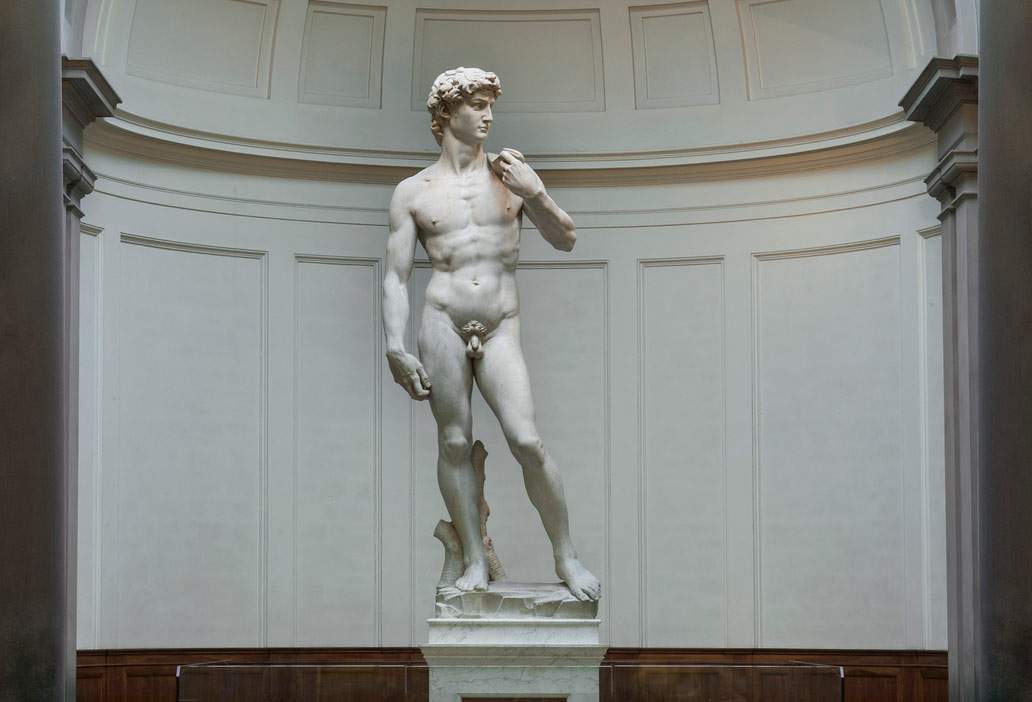
Completely different was the art of Raphael, seemingly immune to the severe inner torments that lacerated Michelangelo’s soul. Raphael had a completely opposite character: as restless and troubled as the former was, so sunny was the latter. Raphael revisited the spatiality of Renaissance art, bringing it to an extreme simplification that resulted in very harmonious and graceful forms(Madonna of the Goldfinch, 1506, Florence, Uffizi), so much so that Raphael deserved the epithet divine. Raphael’s art took its cues from the artists he was inspired by and knew how to blend all these influences harmoniously. From the master Perugino, Raphael took lyricism. From Leonardo he drew the lesson on the motions of the soul. From Michelangelo he took, in certain of his works, the very solid and sculptural plasticism. In Raphael the suggestions are always very evident, but the whole of these suggestions manages to merge in his art in a very homogeneous way to give rise to a unique stylistic figure, made up of grace and classicism, a classicism that found its highest expression in the depiction of the ideal beauty of which Raphael was, together with Michelangelo, the greatest interpreter in this phase of the Renaissance.
Moreover, of the three artists, Raphael was the only one who did not reject the linear perspective of the early Renaissance (at least for most of his artistic career). And again Raphael also proved to be an excellent investigator of objective reality as appears from several of his portraits(Portrait of Agnolo Doni, c. 1506, Florence, Pitti Palace). But his art lacks the dramatic tension that distinguished Michelangelo’s lesson precisely because of the different conception of art according to the two artists. As noted above, the work of art (and thus ideal beauty) in Michelangelo is in the material and the artist’s task is to bring the beautiful to light. For Raphael, on the other hand, ideal beauty is a quest for grace, harmony, delicacy, and ease of execution.
All three artists left Florence before the return of the Medici, some sooner and some later: Michelangelo went to Rome in 1505 (but later returned to Florence at the time of Pope Leo X de’ Medici), and in Rome Raphael joined him in 1509. It was in Rome that Raphael settled permanently (and the rivalry between the two artists flared up). Leonardo, on the other hand, left Florence in 1508 to return to Milan, where he had already stayed in the 1590s, at the time of the rule of Ludovico il Moro. From Milan, he would later reach France after some time.
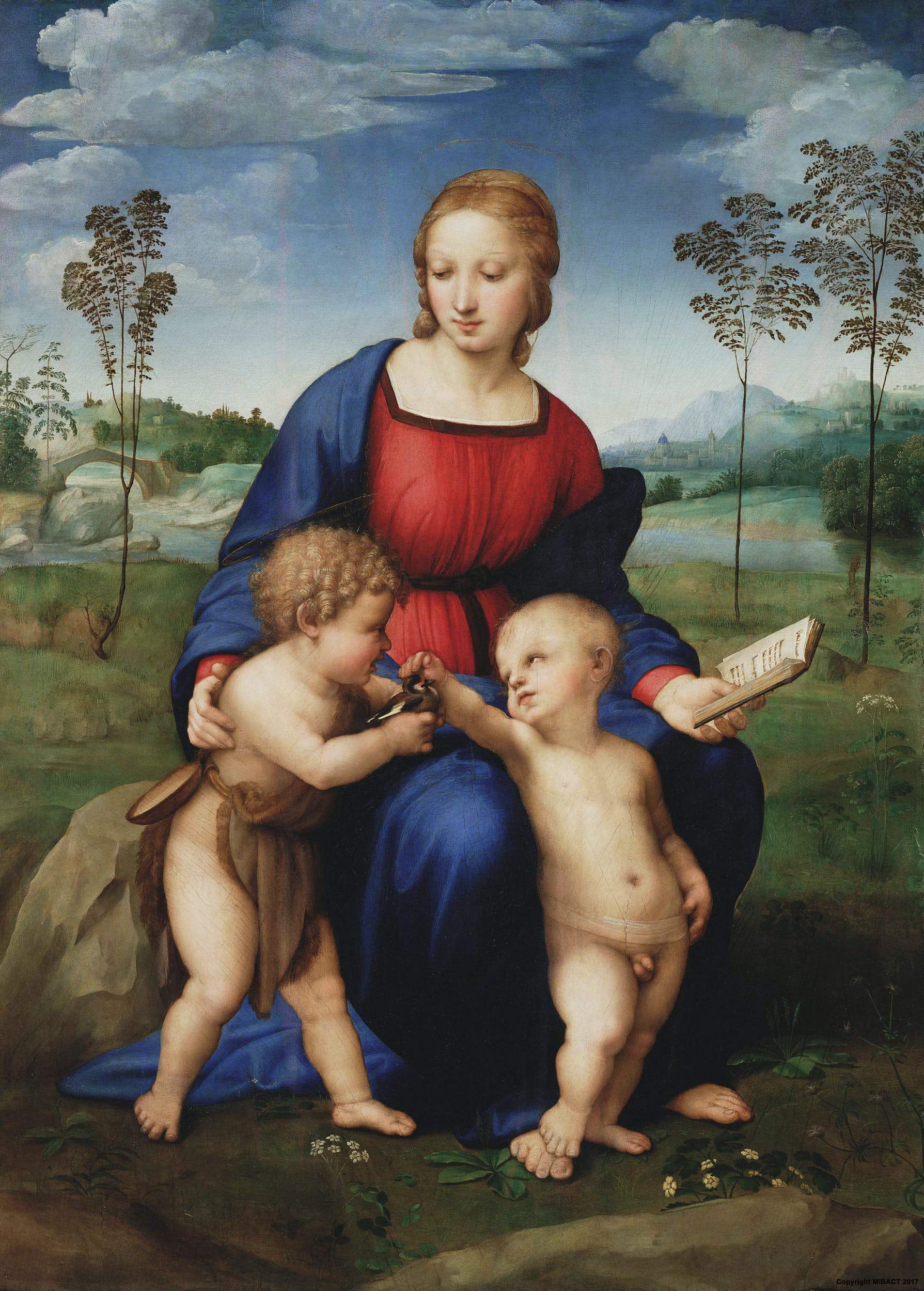
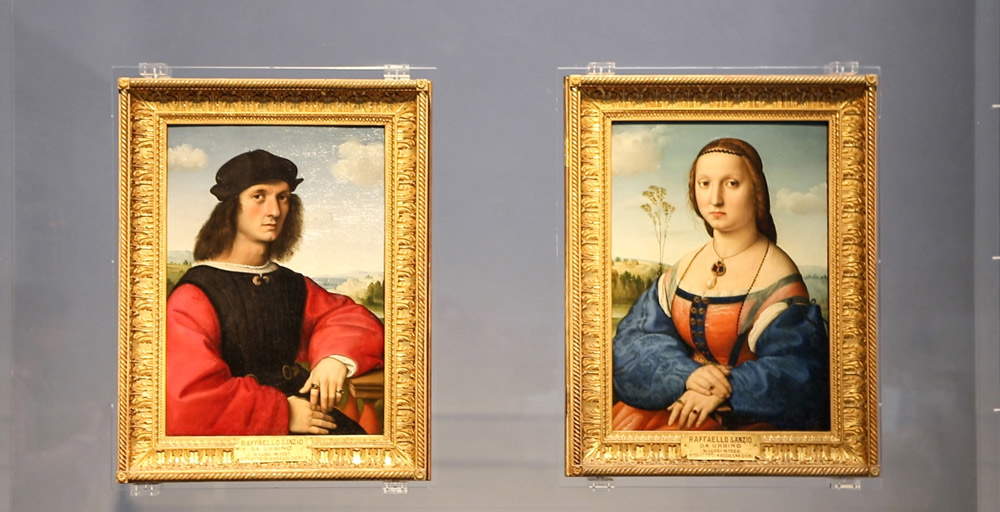
Alongside the figures of the three main artists, there later emerged in Florence figures that we might call transitional figures between the early Renaissance and the mature Renaissance. These figures were those of Baccio della Porta, later Fra’ Bartolomeo (Florence, 1473 - 1517), Andrea del Sarto (Florence, 1486 - 1530) and Giovanfrancesco Rustici (Florence, 1475 - Tours, 1554). Fra’ Bartolomeo was formed in the wake of tradition, looking to artists such as Lorenzo di Credi, Perugino and Ghirlandaio, but soon the lessons of the mature Renaissance arrived in his art, which was enriched on the one hand by Raphaelesque grace, of which Fra’ Bartolomeo was one of the greatest interpreters at the time, and on the other the Michelangelesque plasticism that Fra’ Bartolomeo revisited to grant a monumentality to his paintings that had never been seen in Florence before(San Marco, 1515, Florence, Pitti Palace). Moreover, fra’ Bartolomeo took up models and patterns from Raphael that resulted in a simplification of spatiality in his works(Mystic Marriage of St. Catherine, 1511, Paris, Louvre). Fra’ Bartolomeo was able to continually evolve his art to a highly refined classicism that places him as one of the greatest interpreters of the mature Renaissance.
Different was the approach of Andrea del Sarto, who had Raphaelesque ascendancy in common with Fra’ Bartolomeo, but avoided the strong monumentality of Michelangelo’s origin that distinguished part of Fra’ Bartolomeo’s production and turned instead toward Leonardo da Vinci’s research: this ensured results of greater naturalness in his paintings, which resulted mainly in a naturalistic luminosity reminiscent of Leonardo’s(Assumption of the Virgin, 1526, Florence, Palazzo Pitti). Giovanfrancesco Rustici, on the other hand, was the first great interpreter in sculpture of Leonardo’s and Michelangelo’s innovations. Often unjustly forgotten by much of historiography, Giovanfrancesco Rustici was a contemporary of Michelangelo and like the latter was a pupil of Bertoldo di Giovanni, but also of Verrocchio, whose naturalism he took up. Rustici was extremely fascinated by Leonardo’s Battle of Anghiari: the investigation of the motions of the soul and the unhinging of Renaissance harmony thus entered some of his achievements, which echoed Leonardo’s drawing (Zuffa, 1505; Florence, Bargello Museum). But reflection on the motions of the soul also distinguished what is perhaps Rustici’s greatest masterpiece, the Preaching of the Baptist (1506-1511, Florence, Museo del Duomo), in which the main figure, that of John the Baptist, was inspired, in his poses, gestures and looks, directly by Leonardo. Then, for Rustici, the comparison with Michelangelo was also important, whose plasticism was revisited by Giovanfrancesco Rustici in a more refined and delicate key.
Finally, isolated in this context, but entirely original, was the eccentric figure of Giovanni Antonio Bazzi known as Sodoma (Vercelli, 1477 - Siena, 1549). He trained in his homeland, Piedmont, along with Giovanni Martino Spanzotti, whose pupil he was. He was able, however, to sense how outdated his language already was when, in 1498, he moved to Milan, where Leonardo’s language had already taken root. Sodom, who then came to Tuscany, where he settled permanently, choosing Siena as his city of adoption (and he is credited with bringing the local school back into vogue), elaborated his own personal and highly original style made up of energetic figures (derived from Signorelli³’s art) but greatly softened by his knowledge of the art of Raphael and Perugino, all with a Pinturicchio-like decorative taste, a not inconsiderable love of extravagance, and a natural inclination toward naturalistic investigation learned in contact with the Lombard environment and the painting of Leonardo da Vinci. Characteristics that are well summed up in awork like the 1525 Saint Sebastian (Florence, Uffizi).

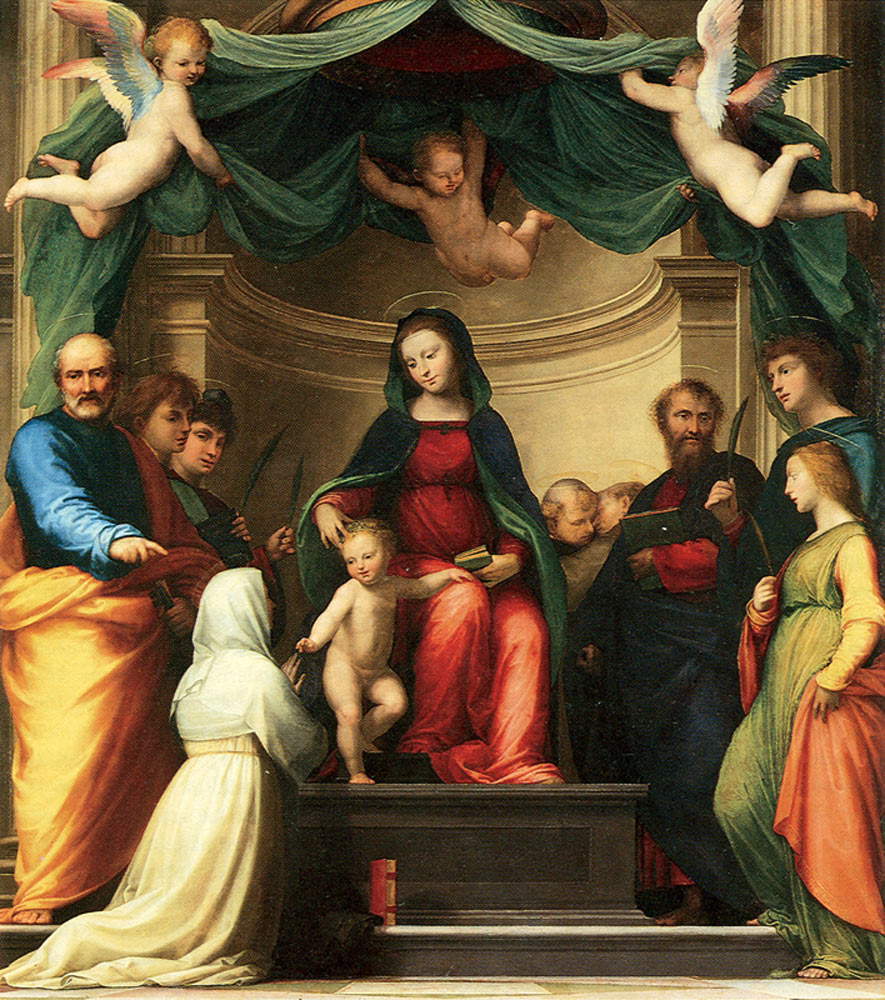


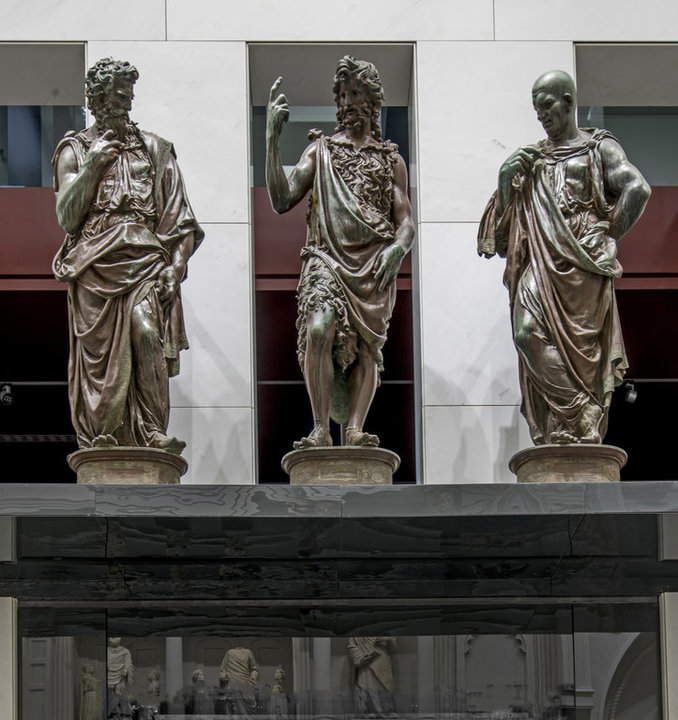

 |
| The Mature Renaissance in Florence. Leonardo, Michelangelo, Raphael, styles, themes. |
Warning: the translation into English of the original Italian article was created using automatic tools. We undertake to review all articles, but we do not guarantee the total absence of inaccuracies in the translation due to the program. You can find the original by clicking on the ITA button. If you find any mistake,please contact us.